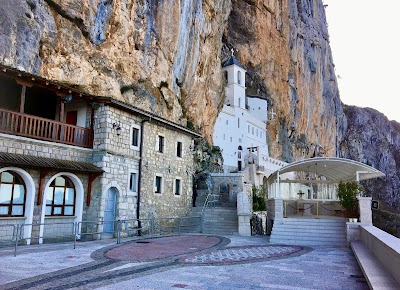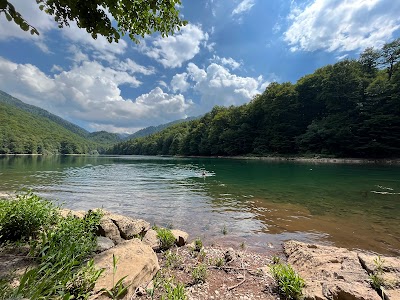Ostrog Monastery (Manastir Ostrog)
Overview
Ostrog Monastery is a remarkable Orthodox Christian site nestled in the rocky cliffs of Mount Ostrog in Montenegro. Located approximately 50 kilometers from Podgorica, it stands as one of the most visited pilgrimage destinations in the Balkans, attracting believers of various faiths and international tourists alike, drawn by its unique character and stunning location.
Historical Significance
The history of Ostrog Monastery dates back to the 17th century, founded by Vasilije Ostroški, who later became known as Saint Basil of Ostrog. Originally established as a refuge during the Ottoman occupation, the monastery provided a safe haven for local Christians to practice their faith. The complex is divided into two main sections—the Upper Monastery and the Lower Monastery—both ingeniously built into the natural rock formations, giving the structure a dramatic and imposing appearance.
Spiritual Importance
Beyond its historical roots, Ostrog Monastery is celebrated as a miracle-working site. Countless pilgrims and visitors seek spiritual healing and pay their respects to Saint Basil of Ostrog, whose relics are enshrined within. The Upper Monastery is particularly significant, housing the cave-church of St. Vasilije, where the relics serve as a focal point for pilgrims. This universal appeal draws individuals from various religious backgrounds, not just Orthodox Christians.
Unique Visitor Experience
Visiting Ostrog Monastery promises a truly unique experience. The architectural ingenuity required to blend this sacred site into its rugged surroundings is extraordinary. As you approach, the winding roads offer breathtaking views of the Bjelopavlići plain and surrounding mountains. Upon arrival, many visitors are captivated by the striking contrast between the monastery's brilliant white façade and the rough, grey cliffs, creating an awe-inspiring visual impact.
Endurance Through History
An interesting aspect of Ostrog Monastery is its resilience through centuries of tumultuous history. It has stood firm against various conflicts, including World War II, often seen as a symbol of fortitude and faith. The site also provides an intriguing glimpse into the ascetic lifestyle of Orthodox monastics, whose traditions have remained largely unchanged over the centuries.
Artistic Treasures
Another remarkable feature of the monastery is the frescoes that adorn its interior walls. Some of these artistic treasures date back to the monastery's earliest days, offering invaluable insights into Eastern Orthodox religious art. The frescoes depict various saints, biblical scenes, and moments from the life of Saint Basil, each painted with meticulous detail and vibrant colors that have survived the passage of time.
Cultural Enrichment
For tourists, a visit to Ostrog Monastery is not merely a spiritual journey but also an opportunity for cultural enrichment. The monastery frequently hosts religious ceremonies and festivals, allowing visitors to witness Eastern Orthodox traditions firsthand. Additionally, the serene environment, enhanced by the surrounding nature, provides a perfect setting for reflection and tranquility, making it a popular retreat for those seeking solace from modern life's hustle and bustle.
Exploring the Surroundings
Exploring the areas around Ostrog Monastery can also be rewarding. The region boasts rich natural beauty, with numerous hiking trails that lead through lush forests, past crystal-clear streams, and up to vantage points offering panoramic views of the landscape. This makes the site an ideal destination for spiritual pilgrims and nature enthusiasts alike.
No trip to Montenegro is complete without experiencing the mystical charm of Ostrog Monastery. It represents a harmonious blend of history, spirituality, and nature, creating an unforgettable experience for anyone who visits. Whether in search of spiritual fulfillment, intrigued by historical architecture, or simply an admirer of stunning natural settings, Ostrog Monastery is a place that will leave a lasting impression on your heart and mind.





